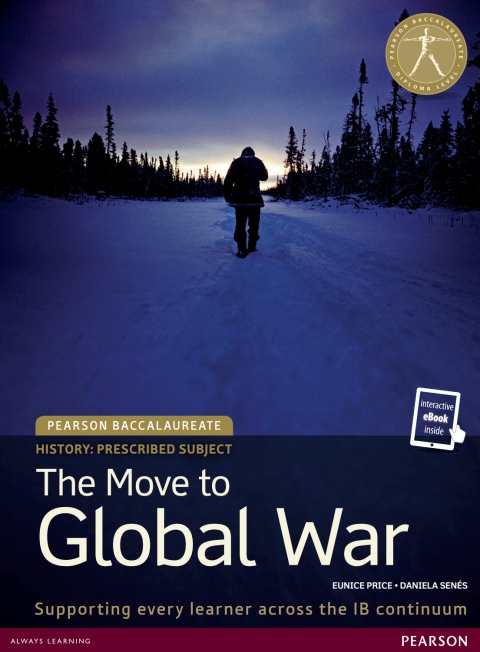Description
Efnisyfirlit
- Contents
- Introduction
- Themes and exam tips
- Case study 1: Japanese expansion in East Asia, 1931–41
- Chapter 1: Causes of expansion, 1868–1930
- 1.1: The impact of Japanese nationalism and militarism on foreign policy
- Commodore Perry and the ‘black ships’
- The Meiji Restoration – a period of social and political change
- First stages of imperialism
- The Taisho era: World War I and its immediate aftermath
- 1.2: Japanese domestic issues and their impact on foreign relations
- Political developments – from Taisho democracy to militarism
- Social and cultural change in the 1920s
- Economic challenges – industry and agriculture
- The growth of ultra-nationalism and its threat to democracy
- The Showa era
- 1.3: Political instability in China
- China and Japan, 1911–22
- The Guomindang and the Northern Expedition
- A review of Chapter 1
- Chapter 2: Japanese expansion and foreign policy, 1931–38
- 2.1: The Japanese occupation of Manchuria and northern China, 1931
- The Manchurian Incident
- The creation of Manchukuo
- 2.2: The response in Japan and China to the Manchurian Incident
- Japan – a political response
- Japan – a popular response
- China’s response to the Manchurian Incident
- The Shanghai Incident
- 2.3: The international response to the Manchurian Incident
- The League of Nations and the Lytton Commission
- Soviet Union’s response to events in the East
- A move to global war?
- The Second United Front
- Political tensions within Japan
- The Anti-Comintern Pact, 1936
- 2.4: The Sino-Japanese War, 1937–41
- The Marco Polo Bridge Incident, 1937
- The Battle for Shanghai, August–October 1937
- The fall of Nanjing, December 1937
- A review of Chapter 2
- Chapter 3: The road to war, 1937–41
- 3.1: The impact of the Sino-Japanese War
- A New Order in East Asia
- 3.2: Japan’s relations with Europe, 1938–39
- Japan and the Axis powers
- The outbreak of war in Europe and its impact on Japan
- 3.3: Japan’s relations with the United States and Britain
- The Tianjin (Tientsin) Incident
- 3.4: The signing of the Tripartite Pact
- The border conflict between Japan and the Soviet Union
- 3.5: An overview of US foreign policy after 1936
- The Quarantine Speech
- The end of American isolationism
- 3.6: Final stages of the move to global war
- Operation Barbarossa, June 1941
- The emergence of the ABCD Bloc
- Indochina and the US embargo on oil, 1941
- The failure of diplomacy
- The descent into war
- 3.7: Historiography – different interpretations of the outbreak of war
- A review of Chapter 3
- Case study 2: German and Italian expansion, 1933–40
- Chapter 4: Italian expansion and its consequences
- 4.1: Causes of expansion
- Impact of Mussolini’s Fascism on Italy’s foreign policy
- Impact of domestic economic issues on Italy’s foreign policy up to 1929
- 4.2: Italian expansion and international response
- Italian foreign policy between 1922 and 1933
- Italian foreign policy in the 1930s
- The rise of Hitler in Germany
- Italian expansion in Abyssinia, 1935–36
- Changing diplomatic alliances
- The invasion of Albania, 1939
- A review of Chapter 4
- Chapter 5: German expansion and its consequences
- 5.1: Causes of German expansion, 1933–37
- Historical background
- Germany’s grievances related to the Treaty of Versailles
- The Weimar Republic and the rise of Hitler
- Impact of Nazism on Germany’s foreign policy
- What did Nazism propose in foreign policy?
- What were Hitler’s aims?
- How did Hitler plan to achieve these aims?
- Impact of domestic issues on Germany’s foreign policy
- 5.2: German challenges and international response, 1933–37
- The League of Nations and the World Disarmament Conference
- International response and early changing diplomatic alliances
- German rearmament and international response
- Anglo-German Naval Agreement
- The remilitarization of the Rhineland
- Changing diplomatic alignments in Europe – Mussolini and Hitler
- 1937 – A year of awareness?
- A review of Chapter 5
- Chapter 6: International responses to Italy and Germany, 1938–40
- 6.1: Moving closer to war
- The Anschluss
- The Sudeten crisis
- The May crisis
- The Munich Conference
- The Polish crisis and the outbreak of war
- German–Italian relations and the outbreak of war
- The Nazi-Soviet Pact
- 6.2: International response between September 1939 and May 1940
- The response of the United States
- War in Europe, September 1939 to May 1940
- The Fall of France
- Italy’s entry into the war
- The Battle of Britain
- 6.3: Historiography – different interpretations of the outbreak of war
- A review of Chapter 6
- Chaper 7: Theory of Knowledge
- Further Reading
- Case Study 1
- Case Study 2
- Glossary
- Index
- Back Cover








Reviews
There are no reviews yet.